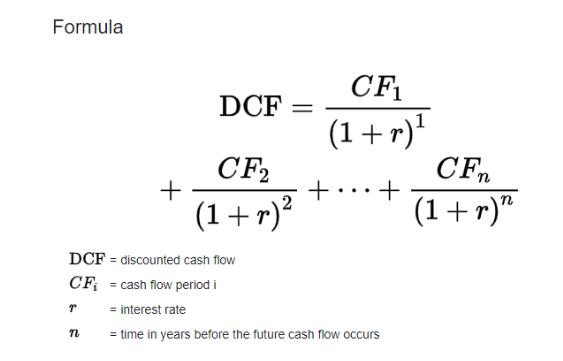



Table of Contents
- Understanding Intrinsic Value in Real Estate
- Ways to Calculate Intrinsic Value
- Current Market Value in Real Estate
- Intrinsic Value Vs Current Market Value
- Importance for Investors
- Practical Insights for Investors
- Conclusion
- Faq's
Real estate investment plays a crucial role in financial planning, particularly in a dynamic market like India. In this context, distinguishing between intrinsic value and current market value is essential for investors aiming to make informed decisions. Intrinsic value refers to the actual worth of a property based on factors like location, condition, income potential, and replacement cost, devoid of market volatility and speculation. On the other hand, current market value is determined by what buyers are willing to pay at a given time, influenced by market trends, demand-supply dynamics, and economic conditions. Understanding both values allows investors to gauge whether a property is overvalued or undervalued, helping them to make strategic investment choices.
In 2024, the significance of differentiating between intrinsic and market value becomes even more pronounced in India's ever-evolving real estate landscape. Factors such as urbanization, infrastructure development, and changing lifestyle preferences continually reshape the market. Investors who comprehend the intrinsic value can identify properties with strong long-term potential, even when market prices are fluctuating. Conversely, those who rely solely on current market value might be swayed by temporary trends, potentially leading to misguided investments. Therefore, a nuanced understanding of these valuation concepts can empower investors to navigate the complexities of the real estate market, ensuring more resilient and profitable portfolios.
Understanding Intrinsic Value in Real Estate
 Understanding Intrinsic Value
Understanding Intrinsic Value
Intrinsic value refers to the fundamental worth of a property based on an objective assessment of various factors. It is often used as a long-term measure of a property's value, unaffected by short-term market fluctuations. Understanding intrinsic value involves considering several key elements:
Key Factors Influencing Intrinsic Value
- Location: One of the most critical determinants, that location influences a property's desirability and potential for appreciation. Proximity to essential services, schools, hospitals, public transport, and future development plans significantly enhances intrinsic value.
- Construction Quality: The materials used, architectural design, and overall durability of the building contribute to its intrinsic value. High-quality construction ensures longevity and reduces maintenance costs.
- Amenities: The availability of amenities such as parking, security, recreational areas, and green spaces adds to the intrinsic value. These features enhance the living experience and make the property more attractive.
- Economic Conditions: Broader economic factors, including GDP growth, employment rates, and inflation, impact the intrinsic value. A robust economy boosts property values through increased demand and purchasing power.
- Future Growth Potential: The potential for future development and appreciation, driven by upcoming infrastructure projects, urbanization, and favorable economic policies, plays a significant role in determining intrinsic value.
Ways to Calculate Intrinsic Value
Calculating the intrinsic value of real estate is essential for investors and homeowners to make informed decisions. There are several methods to determine this value, each offering a different perspective. Here are the most common ways:
1. Comparable Sales Method (Sales Comparison Approach)
Description: This method involves comparing the property in question to similar properties that have recently sold in the same area.
Steps:
- Identify similar properties in the same location.
- Compare features such as size, age, condition, and amenities.
- Adjust for differences to estimate the property's market value.
Use Case: Best for residential properties.
2. Income Approach (Income Capitalization Method)
Description: This method is used for income-generating properties, such as rental units or commercial real estate.
Steps:
- Estimate the annual income generated by the property.
- Subtract operating expenses to get the net operating income (NOI).
- Divide the NOI by the capitalization rate (cap rate) to get the property's value.
Formula: Property Value= NOI/Cap Rate
Use Case: Ideal for rental properties and commercial real estate.
3. Cost Approach
Description: This method estimates the cost to replace the property with a similar one, subtracting depreciation and adding the land value.
Steps:
- Estimate the land value.
- Calculate the current cost to build the property.
- Subtract depreciation (physical, functional, and economic obsolescence).
- Add the land value to the depreciated cost.
Use Case: Useful for new or unique properties where comparables are not available.
4. Discounted Cash Flow (DCF) Analysis
Description: This method projects future cash flows from the property and discounts them back to present value using a discount rate.
Steps:
- Estimate future cash flows from the property.
- Choose an appropriate discount rate (reflecting the risk and return).
- Discount the future cash flows to their present value.
 DCF Formula
DCF Formula
Use Case: Suitable for long-term investments and properties with irregular income streams.
5. Gross Rent Multiplier (GRM)
Description: This is a simpler method used for rental properties, comparing the property's price to its gross rental income.
Steps:
- Determine the gross rental income of the property.
- Divide the property's price by the gross rental income.
Formula: GRM= Property Price/Gross Rental Income
Use Case: Quick estimation tool for rental properties.
6. Replacement Cost Method
Description: Similar to the cost approach, but focuses more on the expense of replacing the property if it were destroyed.
Steps:
- Calculate the cost of constructing a similar property at current prices.
- Subtract depreciation and add the land value.
Use Case: Often used for insurance purposes and new developments.
7. Capital Asset Pricing Model (CAPM)
Description: This method adjusts for the risk associated with the property, comparing it to the return on risk-free assets plus a risk premium.
Steps:
- Identify the risk-free rate of return (e.g., government bonds).
- Determine the risk premium for the property.
- Add the risk premium to the risk-free rate to get the required rate of return.
- Apply the required rate of return to the property's income.
 CAPM Formula
CAPM Formula
Use Case: Advanced method for assessing investment properties.
8. Hedonic Pricing Model
Description: This method involves statistical analysis to estimate the impact of various property features on its value.
Steps:
- Collect data on property sales and characteristics.
- Use regression analysis to determine how different features (size, location, amenities) affect price.
Use Case: Used in academic and professional valuation to understand the impact of individual property attributes.
Current Market Value in Real Estate
 Understanding Current Market Value
Understanding Current Market Value
Current market value is the price at which a property can be transacted in the current market environment. It is highly influenced by immediate market conditions and can fluctuate based on various factors:
Key Factors Influencing Current Market Value
- Demand and Supply: The availability of similar properties and the number of potential buyers directly affect current market value. High demand with limited supply drives prices up, while an oversupply can depress prices.
- Market Sentiment: Investor confidence, market trends, and general sentiment towards the real estate market influence current market value. Positive sentiment can lead to higher prices, while negative sentiment can reduce them.
- Recent Transactions: Prices of recently sold properties in the same area provide a benchmark for current market value. These transactions reflect what buyers are currently willing to pay.
- Economic Policies: Government regulations, interest rates, tax policies, and incentives can significantly impact market value. For instance, favorable tax policies or reduced interest rates can stimulate demand and increase prices.
- Inflation: Changes in the general price level affect purchasing power and, consequently, property prices. Higher inflation typically leads to higher property prices as construction costs and other expenses rise.
Intrinsic Value Vs Current Market Value
While intrinsic value and current market value are interconnected, they serve different purposes and are used for different types of analysis:
- Intrinsic Value: This is a more stable, long-term measure, helping investors assess the fundamental worth of a property. It is particularly useful for long-term investment decisions, ensuring that investors do not overpay based on short-term market trends.
- Current Market Value: This provides a snapshot of the property's price at a specific point in time, influenced by market dynamics. It is essential for making immediate buying or selling decisions and understanding the current market landscape.
Importance for Investors
 Importance for Investors
Importance for Investors
Understanding both intrinsic value and current market value is crucial for making informed real estate investment decisions. Here's why:
- Long-term Investment: Intrinsic value helps investors focus on properties with genuine potential for appreciation, ensuring long-term gains and stability in their investment portfolio.
- Market Timing: Current market value aids in timing the purchase or sale of properties to maximize profits. Investors can take advantage of market conditions to buy low and sell high.
- Risk Mitigation: Comparing intrinsic value with current market value helps in identifying market bubbles and avoiding overpriced properties. This approach reduces the risk of significant losses due to market corrections.
Practical Insights for Investors
Investing in real estate in India requires a strategic approach, considering both intrinsic and current market values. Here are some practical insights:
- Conduct Thorough Research: Research the location, future development plans, economic indicators, and property features to assess intrinsic value accurately.
- Hire Professional Valuers: Engage professional valuers to get an accurate assessment of the property's intrinsic value. Their expertise can provide a more precise estimate based on comprehensive analysis.
- Monitor Market Trends: Keep track of market trends, recent transactions, and economic policies to understand the current market value. Staying informed helps in making timely and informed decisions.
- Focus on Long-term Growth: Prioritize properties with strong intrinsic value for long-term investments. These properties are likely to appreciate over time, providing stable returns.
- Adapt Your Strategy: Be flexible and ready to adapt your investment strategy based on changes in the market. Regularly re-evaluate your investments to ensure they align with both intrinsic and current market values.
Conclusion
Distinguishing between intrinsic value and current market value is essential for real estate investors. Intrinsic value provides a reliable measure of a property's true worth, based on fundamental factors such as location, condition, and income potential. This value remains relatively stable and unaffected by short-term market fluctuations, offering investors a solid foundation for evaluating properties. On the other hand, the current market value reflects the prevailing market conditions, influenced by demand-supply dynamics, economic trends, and buyer sentiment. Understanding this value helps investors stay informed about the market's current state and anticipate potential changes.
By considering both intrinsic and current market values, investors can make more informed decisions, mitigate risks, and maximize their returns in the dynamic Indian real estate market of 2024. This dual approach allows them to identify undervalued properties with strong long-term potential and avoid overpaying for properties influenced by temporary market trends. Ultimately, a comprehensive understanding of these valuation concepts equips investors with the knowledge needed to navigate the complexities of the real estate market, ensuring more resilient and profitable investment portfolios.
explore further
Latest from Home Buying Tips
More from Recommendations
Resources
Dwello, for every home buyer, is a way to go from 'I feel' to 'I know', at no extra cost.




